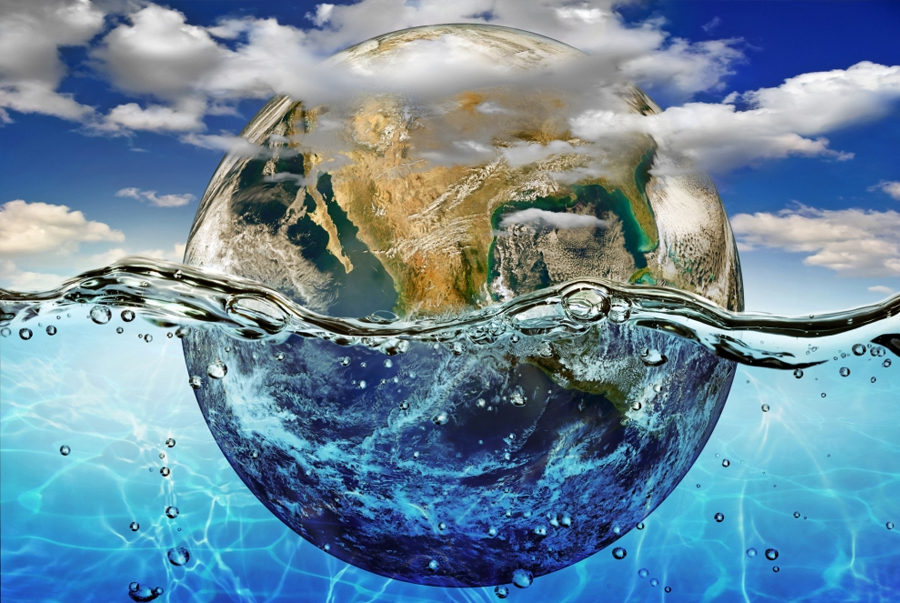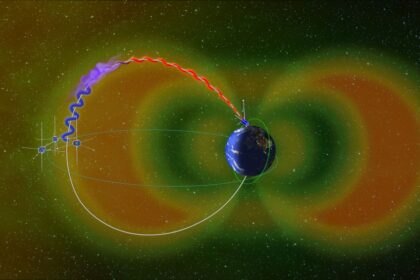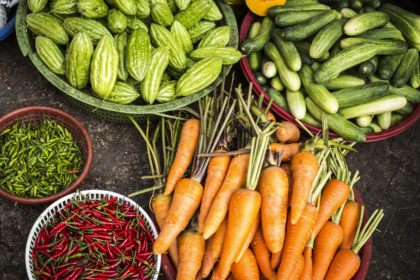Hi readers I am not saying this, but world-renowned scientist, author and authority said this. No one cane dare challenging him. His words are undeniable. But what he has said?
- Nearly all of the available land has been cleared of forest and is now being used for agriculture or urban development.
- The polar icecaps are shrinking, and the desert areas are increasing.
- At night, the Earth is no longer dark, but large areas are lit up/ artificially illuminated.
He did not say that global warming mediated climate change or climate change mediated global warming has ruined the earth instead, he used the polite words in a very humble phrase
“if you can see from the space, you will realize how human race has changed the Earth”
He must have uttered these painfully. All of this is an evidence that human exploitation of the planet is reaching to a critical limit. But human demands and expectations are ever-increasing. We cannot continue to pollute the atmosphere, poison the ocean, and exhaust the land. There isn’t any more available.”
What do you now say dear readers about the climate change?
Is it changing or not”?
By the way, this is the repeat of previous blog with new name and figures instead of tables because some of the readers have complaint that tables were difficult to comprehend hence this time no table but bar diagrams, very easy to understand (sorry for inconvenience)
So, let’s try to comprehend what Stephen Hawking has said?
Clearing forest: It can quickly create usable space for: agriculture, more living space, more transportation networks, and economic stimulus but, it can also increase amount of carbon dioxide in the atmosphere, accelerate soil erosion, result in complete loss of biological diversity of both plants and animals (vital component of our food security), destroys the habitat of animals and birds; can increase frequency of floods and fires, cause greenhouse gases build-up, limit the supply of wood or timber, and affect the discovery of new herbal medicines,
Increasing desert areas: (better learn how to use it? I will blog on this aspect),
Lit up (illuminated) nights: Exposure to artificial bright light during the nighttime suppresses melatonin secretion, (which is made during sleep, and is cancer suppressor, thus exposure to light during night may accelerate cancer development, diabetes, heart disease, and obesity), increases sleep onset latency, cause alertness, circadian misalignment which may have negative effects on the psychological, cardiovascular and/or metabolic functions. Illuminated night can disturb plant’s photoperiod to which, many plants are sensitive for generative development, seed germination, leaf formation rate, leaf blade length, and width expansion, dry matter production, and its partitioning.
Imagine
How human exploitation of the planet has created so many affects.
These are the real dangers that we need to worry about.
Ok
Now, the question is how our agriculture is responding to such challenges?
We all know that agriculture is the main component of global food security, hence, anything affecting our agriculture is considered a direct threat to our food security. However, agriculture is beset with several challenges. For example, by 2050, the global population will reach 8.9 billion (40% increase) and per capita food consumption will rise above 3100 Kcal per day, which means 70% increase in agricultural productivity. This is not possible from the available 1600-1680 Mha of cultivable land which is not sufficient to produce the requirement of 40% increased population, hence 90% of the required increase will come from
intensifying farming practices and higher yields
From 1960 till to date, crop yields have increased globally by 77% just by exploiting the genetic potential which has largely been exhausted and required re-evaluation because many varieties currently are producing only 30-35% of what is agro-ecologically attainable under comparable environments. It is largely believed that climate change has aggravated the situation.
What the data says? Because data don’t lie

Figure 1 is indicating the data that I personally downloaded from FAO satellite in 2011. It spans around 1960 to the year 2010 (2000 to 2010 shows visible changes). It is telling us clearly that productivity of all the four commodities (2 each of staples and cash crops) are increasing steadily (for whatever reasons).
Is slow and steady really winning the race?

Data in Figure 2 says Yes, it is possible. This data (source of data in figures 2, 2a, 3, and 4 is from respective Economic Surveys of Pakistan for which I reserved my comments) clearly indicated that area under cotton cultivation is decreasing and that of Sugar Cane is increasing. Changes between 2004 to 2010 (Figure 2a) clearly indicating how cotton production is steadily decreasing. The trends are again showing steady increase especially of sugar cane and rice (both high delta crops). Please remember, 2010 was the year of global disaster nevertheless, the production of sugar cane and of rice increasing possibly due to increasing area under cultivation of both these crops.


This is what data in Figure 3 is confirming. This data is spanning around 2011 to 2018. It abundantly clear that we are slowly and steadily increasing the area under cultivation of rice and sugar cane. Variable increase in yield is also evident especially for rice and to some extent for wheat and sugarcane but overall trend is on the increasing side. However, the situation is worse for cotton: our main cash crop and backbone of our economy. A decrease in area under cultivation is clear especially during 2017 and 2018. Yield is also decreasing and so does the production of cotton. Is it due to mismanagement, bad quality of seeds, lack of awareness about production technology, fake and/or adulterated agrochemicals? Nothing can be said for certainty at the moment, but it is certainly not the effect of the so-called “climate change” because it is not seen on the remaining three crops.






Just to remind the glimpses of 2010. Images above are of floods in different cities of Pakistan.
Images below are tornado in USA .

However, data does speak for itself (Figure 4). It is clear that we are self-sufficient for wheat (we have produced 27.39 MT and we need only 26 MT), rice (we produced nearly 70 MT of rice and we need only 40 MT), and sugar cane (we are producing over 80 MT and we need only 40-50 MT). Nevertheless,
- We are exporting rice and earning foreign exchange.
- We are nearly self-sufficient in wheat which we some time export (really?) to earn dollars and then we import the same amount with double the amount of dollars
- We export over 20MT of surplus (so called) sugar for dollars, yet we sometime import spending more amount of dollars than earn through export (have a heart please)
What type of people are we? can you guess dear readers
Figure 4. provides clear evidence that we are worst in cotton (the backbone of our economy which is now crumbling) despite having the world’s best cotton growing areas especially for fiber quality. The production of cotton is steadily decreasing especially from 2016 onward. We used to have the capacity and capability of producing above 14 M bales but then we decided to embark on biotechnology and genetic engineering (totally ill-conceived and unplanned: I have already blogged on this) which brought us where are now.
We need 22 M bales @1400 kg ha1 whereas we are producing only 6-8 M bales @ 600-700 kg ha1. Government says, “we have increased the area, but overall performance remained below average due to unfavorable weather and low water availability during important stages of plant development along with pest attacks.
Obviously when we are abandoning the crop for promoting cultivation of sugar cane: high delta crop, from where we will get water adequate for cotton cultivation? We know fully well that there is a chronic shortage of water, yet we are doing this.
We are our own enemy, don’t we?
Tony Curl: a businessman and leadership coach says:
We are partners in our own deceptions. The lies we tell ourselves, the life we are settled for and for the life we wish for. We become our own worst enemy as we yearn for things we don’t have and discredit the gifts we have
What do you think dear readers?
See you next week with interesting debate on
“Are the data in various Economic Surveys of Pakistan is fake/fabricated?
Take care Bye.





